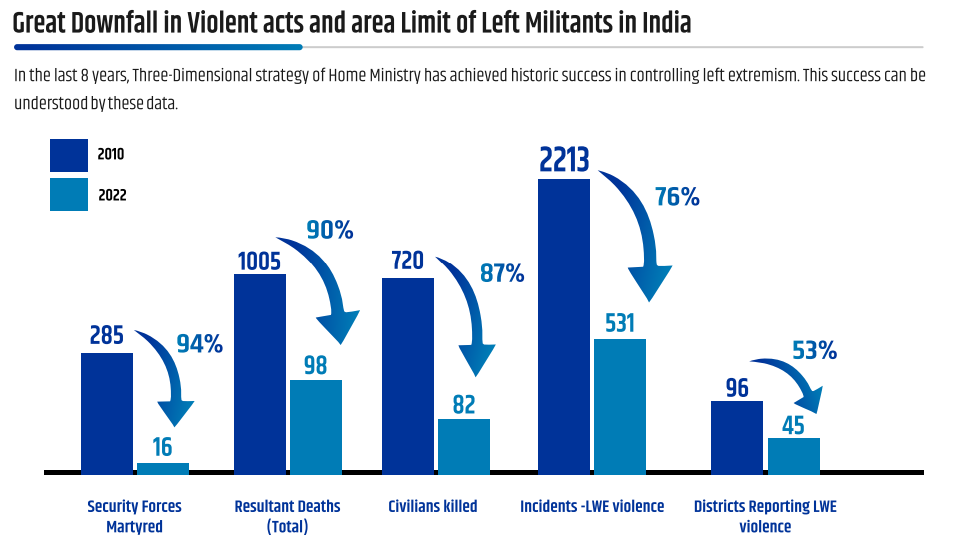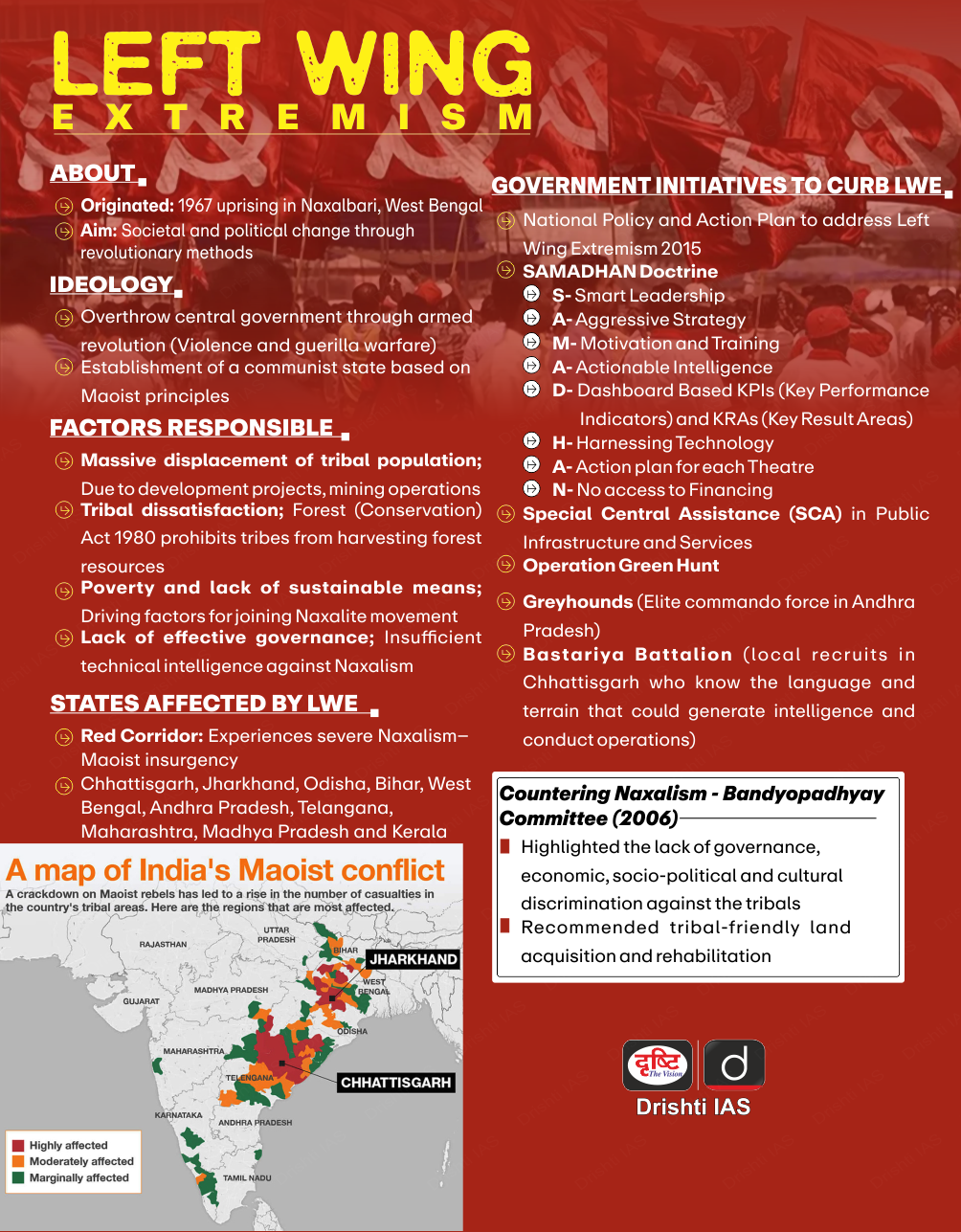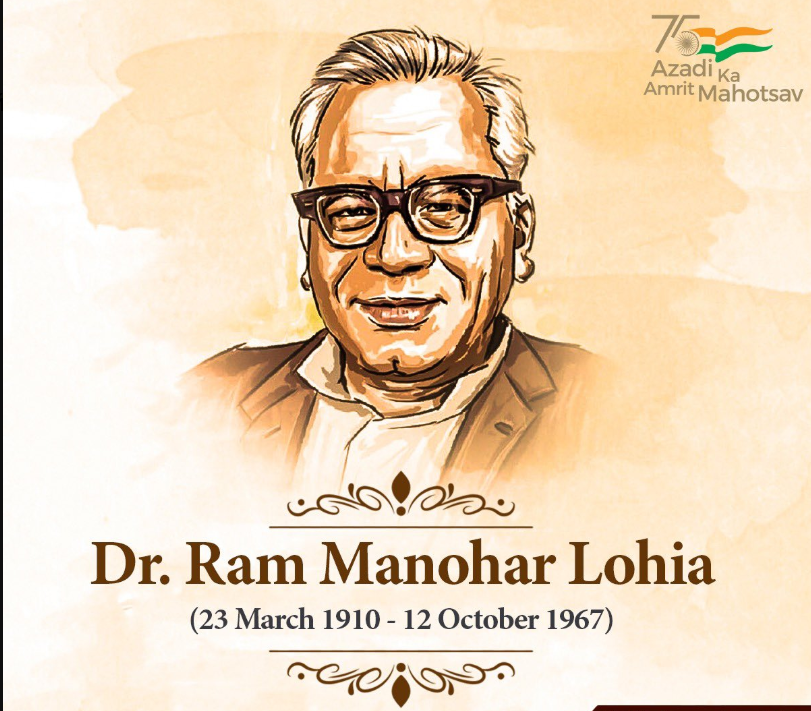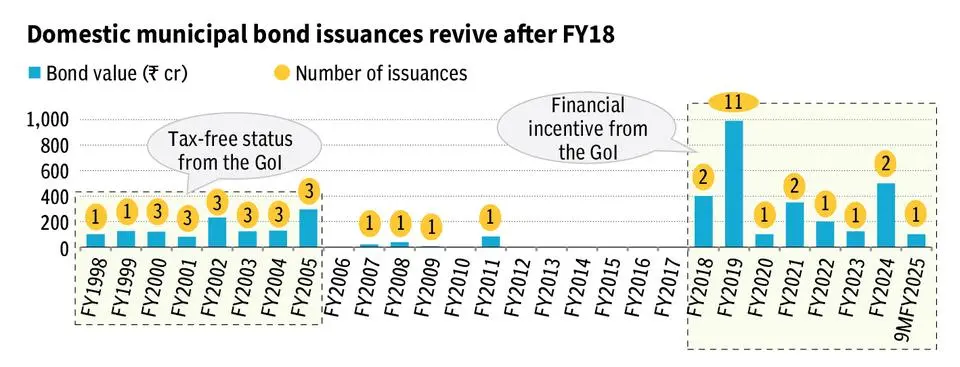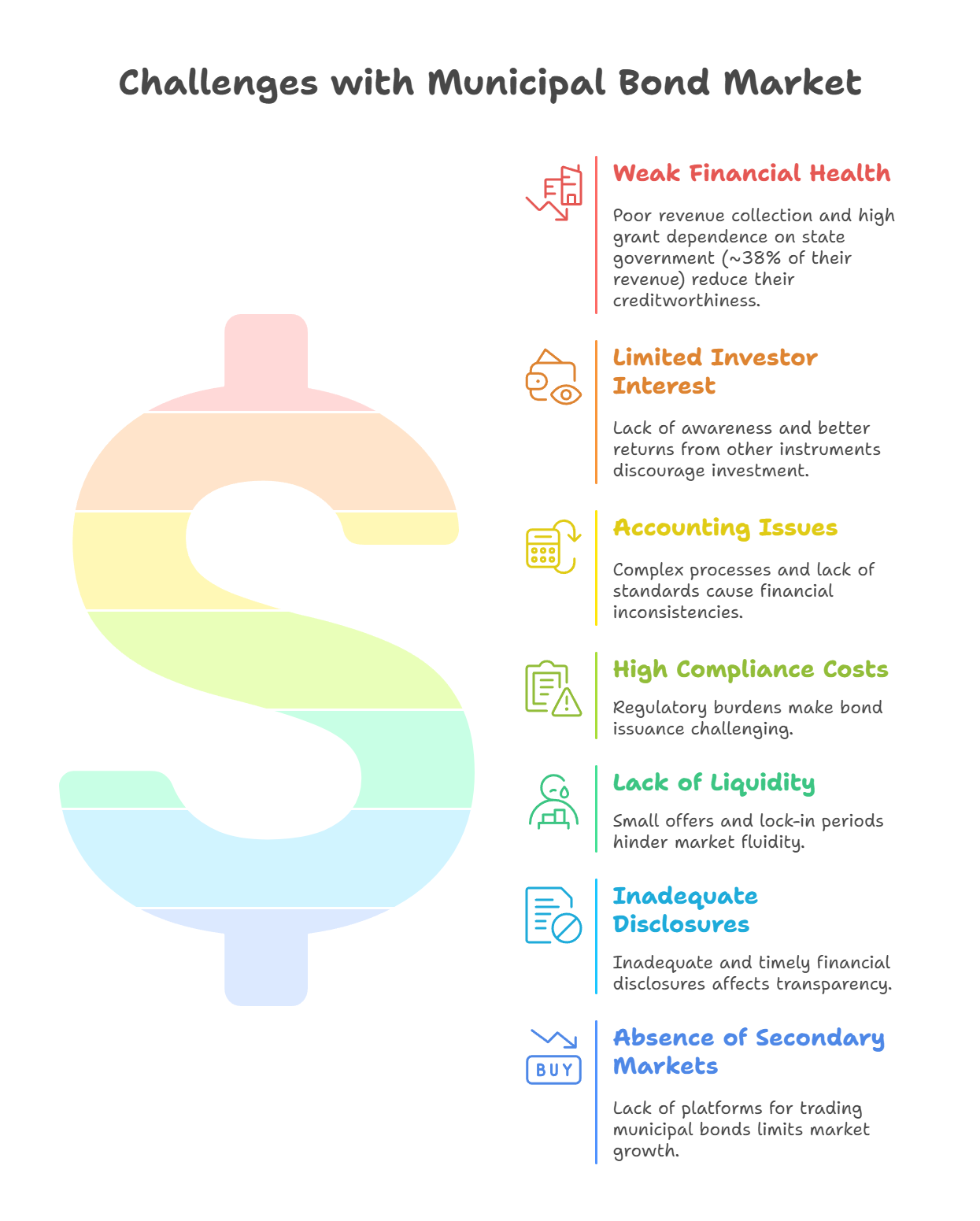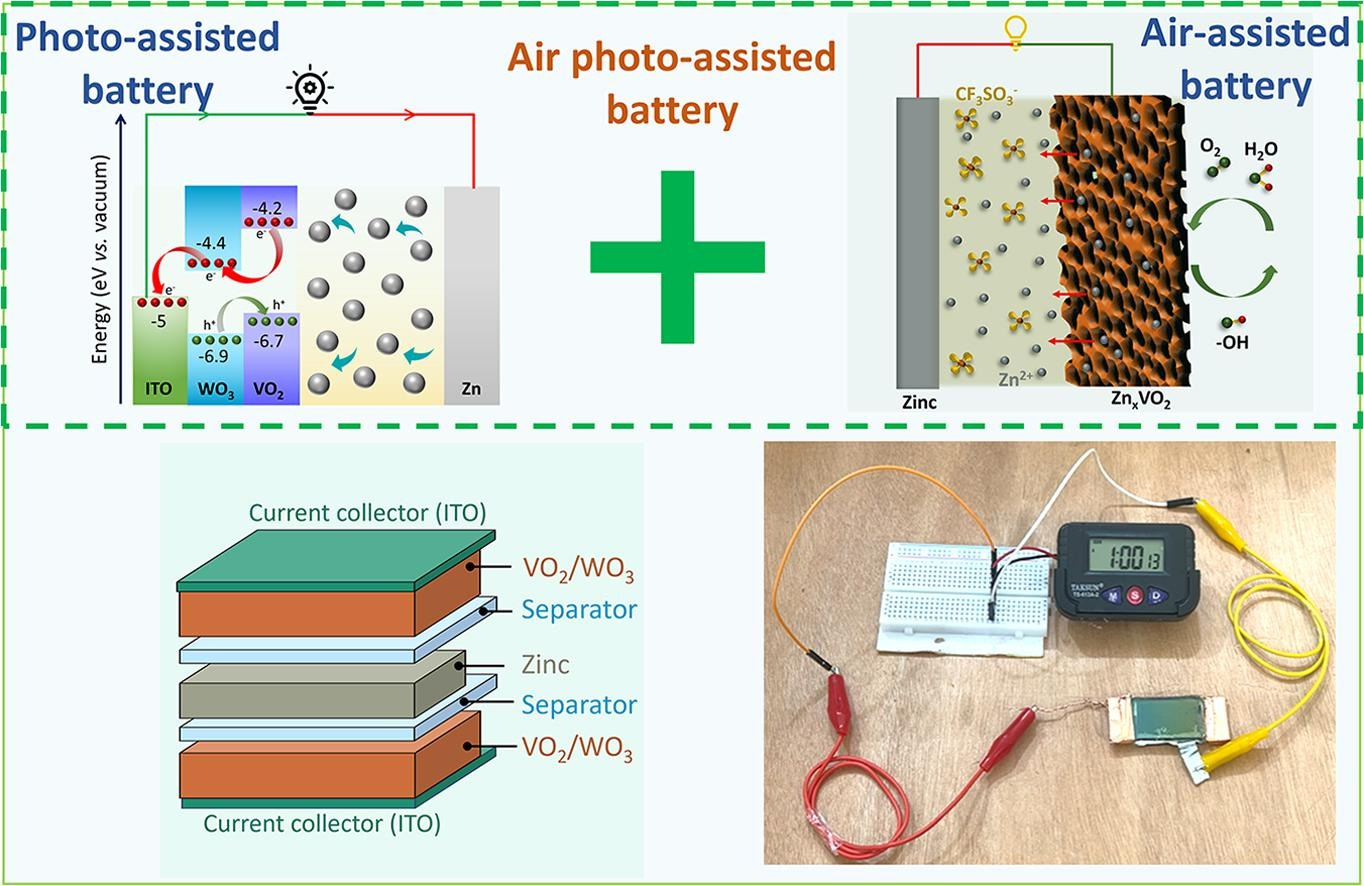Governance
Challenges in Policing Digital Giants
For Prelims: Competition Commission of India, National Company Law Appellate Tribunal, Data Protection Board, Article 19(2)
For Mains: Competition Law in India, Regulatory Challenges in Digital Markets, Impact of Emerging Technologies on Competition Policy
Why in News?
The Competition Commission of India (CCI) imposed a fine of Rs 213 crore on Meta and enforced a five year ban on sharing user data collected on WhatsApp with other Meta companies such as Facebook and Instagram, for advertising purposes.
- However, the National Company Law Appellate Tribunal (NCLAT) granted a stay on this ban and penalty.
- This case underscores the challenges of regulating Big-Techs and the need for a forward-looking competition law framework in India.
Overview of Meta’s Case
- The CCI found WhatsApp’s 2021 privacy policy forced user consent for data sharing with Meta, boosting its dominance in OTT messaging and digital ads. Meta used WhatsApp’s vast user base for targeted advertising, which CCI termed an unfair trade practice, harming privacy and blocking competition and imposed a fine and 5 year ban on data sharing.
- NCLAT stayed the ban and penalty on Meta, citing the need for legal review and required deeper scrutiny of CCI’s findings. As a conditional relief, NCLAT directed Meta to deposit 50% of the fine while legal proceedings continued.
What are the Challenges in Regulation of Big-Techs?
- Regulatory Lag in Digital Markets: India’s Competition Act, 2002 lacks explicit provisions to deal with data-centric dominance (data monopolization).
- The law was framed for traditional markets focusing on price and output, whereas digital monopolies thrive on network effects, ecosystem integration, and data aggregation.
- Fragmented Governance: Regulatory agencies such as the CCI and Ministry of Electronics and Information Technology (MeitY) operate without adequate inter-agency coordination.
- Additionally, the Data Protection Board, proposed under the Digital Personal Data Protection (DPDP) Act of 2023, is not yet established.
- Legal Ambiguity: Digital platforms exploit vague laws to evade scrutiny. India’s Information Technology Act, 2000, lacks clarity on Artificial Intelligence (AI) -generated content, algorithmic bias, and data flows, raising concerns about regulatory ambiguity and ineffective implementation.
- A key example is X Corp’s (formerly known as Twitter) challenge to the Indian government's use of Section 79(3)(b) of the IT Act to block online content.
- The Supreme Court in Shreya Singhal v Union of India (2015) ruled that content can only be blocked through Section 69A of the IT Act if deemed “necessary” under Article 19(2), also stated that Section 79(3)(b) provides "safe harbour" protection to intermediaries like X, shielding them from liability for user content but requiring removal if ordered by a court or government.
- However, MeitY's “Sahyog” portal (2024) allows officials to block content under Section 79 without court or central approval, which X Corp claims violates the law.
- A key example is X Corp’s (formerly known as Twitter) challenge to the Indian government's use of Section 79(3)(b) of the IT Act to block online content.
- Global Nature of Tech Firms: These companies operate across borders, while national laws remain territorial, limiting enforcement and compliance.
- For instance, Meta faces date scrutiny in the US, EU, and Australia, revealing a transnational challenge.
- AI and Emerging Technologies: There is no clear accountability for AI-generated content, as seen in controversial responses by the Grok 3 chatbot (generative AI chatbot developed by xAI), algorithmic decisions, or deepfake distribution.
- Current laws do not address autonomous content moderation or automated data profiling.
- Platform Power and Gatekeeping: Tech giants like Google control app stores, ads, and communication platforms, giving their products an unfair advantage and limiting competition.
How are Major Economies Regulating Big Tech Firms?
- US: The US emphasized the need for antitrust reform to curb Big Tech’s dominance.
- Meta faces lawsuits over its acquisitions of Instagram and WhatsApp, while Google was found guilty of violating the Sherman Act (2024) due to monopolistic practices in search and advertising.
- European Union: Digital Markets Act (DMA) imposes strict rules on "gatekeepers" like Google and Apple to prevent anti-competitive behavior.
- General Data Protection Regulation (GDPR) enforces stringent data privacy rules with heavy fines for non-compliance.
What Reforms are Necessary to Regulate Big-Techs?
- Digital Competition Act: The Committee on Digital Competition Law (CDCL), 2023 proposes a Digital Competition Act to regulate Big Tech and strengthen CCI, addressing data dominance, network effects, and platform lock-ins.
- Fast-Track Dispute Resolution: Set up a Digital Market and Data Unit (DMDU) within the CCI to handle cases with defined timelines.
- Promote Fair Competition: Set up a central data-sharing repository backed by consent protocols, accessible to all tech firms.
- This will ensure fair access to anonymised data, helping smaller players compete effectively.
- Multidisciplinary Enforcement: Develop unified frameworks, akin to EU’s Digital Markets Act (DMA), integrating privacy and competition concerns.
- Ex-Ante Regulations: The Standing Committee on Finance (2022-23) recommends a shift from ex post (after monopolization occurs) to ex ante (before monopolization happens) evaluation of competitive behavior to prevent market dominance.
- The CDCL, 2023 recommends ex-ante regulation of Systemically Significant Digital Enterprises (SSDEs) offering core digital services like search engines, social networks, and web browsers, which are prone to market concentration.
- Classify SSDEs as outlined in Digital Competition Bill, 2024 to identify and regulate Big Tech firms with significant market influence.
- Transparency in Algorithms: Mandate disclosure of algorithmic decision-making, AI biases, and platform policies.
- Enforce data silos, prohibit cross-platform data sharing without explicit user consent, and impose interoperability mandates to level the digital playing field.
- Transnational Framework: Given the transnational presence of tech firms, India must develop a robust data protection framework like the California Consumer Privacy Act (CCPA).
- The CCPA applies to businesses collecting data from Californians, including foreign firms(have customers in California), and grants users rights to access, control, and delete personal data, restrict its sale, and seek transparency in data processing. Parental consent is required for selling children's data.
- Consumer Data Protection: Ensure strict data privacy under DPDP Act of 2023 to prevent abuse of user information by dominant firms.
|
Drishti Mains Question: Discuss the role of network effects and data monopolization in the rise of digital market dominance. How should regulators respond? |
UPSC Civil Services Examination, Previous Year Question (PYQ)
Prelims
Q. With reference to ‘consumers’ rights/privileges under the provisions of law in India, which of the following statements is/are correct? (2012)
- Consumers are empowered to take samples for food testing.
- When a consumer files a complaint in any consumer forum, no fee is required to be paid.
- In case of death of consumer, his/her legal heir can file a complaint in the consumer forum on his/her behalf.
Select the correct answer using the codes given below:
(a) 1 only
(b) 2 and 3 only
(c) 1 and 3 only
(d) 1, 2 and 3
Ans: (c)


Internal Security
India’s Strategy to Eliminate Naxalism
For Prelims: Operation Green Hunt, CoBRA, Greyhounds, Universal Service Obligation Fund Scheme, Maoism
For Mains: Left-Wing Extremism and internal security in India, Government strategies to eliminate Naxalism
Why in News?
The Union Home Minister announced that the central government is aggressively working towards a Naxal-free India, setting a target to eliminate Naxalism by 31st March 2026, ensuring that no citizen has to lose their life because of it.
What is India’s Strategy to Eliminate Naxalism?
- Development Programs: Under the Seventh Schedule of the Indian Constitution, Police and Public Order fall under the jurisdiction of state governments.
- However, to combat Left-Wing Extremism (LWE), the National Policy and Action Plan to Address LWE, 2015 was adopted, implementing a multi-pronged approach that combines security measures, development initiatives, and community rights protection.
- Road Connectivity Project for LWE-Affected Areas under the Pradhan Mantri Gram Sadak Yojana II enhances road connectivity to improve access to remote areas and facilitate security operations.
- ROSHNI Scheme focuses on training and employment opportunities for rural youth in LWE-affected districts.
- Industrial Training Institutes and Skill Development Centers are established in LWE Districts.
- Around 130 Eklavya Model Residential Schools (EMRS) were made functional in tribal blocks of LWE-affected districts to improve access to quality education.
- Under the Universal Service Obligation Fund Scheme (now Digital Bharat Nidhi), mobile towers are installed to improve communication in LWE-affected areas.
- Tribal Youth Exchange Programs under Nehru Yuva Kendra Sangathan to enhance outreach to tribal youth in LWE-affected districts.
- Security Operations: Large-scale operations like Operation Green Hunt deploy paramilitary forces to eliminate the Naxalite presence.
- Increased deployment of Central Armed Police Forces (CAPFs) and state police, along with specialized forces such as Commando Battalion for Resolute Action (CoBRA) and Greyhounds (Andhra Pradesh), strengthens counter-insurgency efforts in the Red Corridor for long-term security.
- Legal Framework: Laws such as the Unlawful Activities (Prevention) Act (UAPA, 1967 ban Naxalite organizations.
- Additionally, the Forest Rights Act, 2006 secures tribal communities' rights over forest produce, while the Panchayats (Extension to Scheduled Areas) Act, (PESA) 1996 empowers tribal gram sabhas in governance and resource management.
- Surrender-cum-Rehabilitation Policy: Financial aid, vocational training, and social reintegration programs are provided for surrendered Naxals to facilitate their return to mainstream society.
- Progress Made: The number of LWE-affected districts has reduced from 126 (2014) to just 12 (2024).
- Naxal-related incidents have significantly decreased from 16,463 (2004-2014) to 7,700 (2014-2024).
- Casualties among security forces due to Naxalism have declined by 73%, while civilian casualties have decreased by 70%.
- Fortified police stations have increased from 66 (2014) to 612 (2024).
What is Naxalism?
- About: Naxalism, a form of LWE inspired by Maoist ideology, seeks to overthrow the state through armed rebellion (violence and guerrilla warfare).
- The term Naxalism derives its name from the village Naxalbari in West Bengal, where an uprising of peasants occurred in 1967 against exploitative landlords.
- It has since evolved into a complex insurgency affecting several states across India.
- Causes for Naxalism:
- Landlessness and Exploitation: Unequal land distribution and exploitative practices by landlords, moneylenders, and middlemen fuel resentment in rural and tribal areas and led to growth of Naxalism.
- Poverty and Underdevelopment: Naxalite-affected regions lack basic amenities like healthcare, education, and employment opportunities, driving people towards extremism.
- Tribal Alienation: Displacement due to industrial and mining projects without proper rehabilitation creates anger and distrust towards the state, leading many to join Naxalite movements.
- State Neglect and Violence: A weak government presence, lack of basic services, and instances of police excesses, including custodial deaths, have further intensified grievances, strengthening the Naxalite insurgency.
- Indian Maoists: The Communist Party of India (Maoist) is the largest and most violent Maoist group in India. It was formed through the merger of two major Maoist factions: CPI (Marxist-Leninist) People’s War and the Maoist Communist Centre of India.
- The CPI (Maoist) and its organizations were banned under the UAPA, 1967.
- Geographic Spread: The Naxal movement is most active in the “Red Corridor,” spanning parts of several Indian states, including Chhattisgarh, Jharkhand, Odisha, Maharashtra, and Bihar.
|
Drishti Mains Question: Discuss the factors that contributed to the rise of Naxalism in India and analyze the government’s approach to countering it. |
UPSC Civil Services Examination, Previous Year Question (PYQ)
Mains:
Q. The persisting drives of the government for development of large industries in backward areas have resulted in isolating the tribal population and the farmers who face multiple displacements. With Malkangiri and Naxalbari foci, discuss the corrective strategies needed to win the Left-Wing Extremism (LWE) doctrine that affected citizens back into the mainstream of social and economic growth. (2015)
Q. Article 244 of the Indian Constitution relates to administration of scheduled areas and tribal areas. Analyze the impact of non-implementation of the provisions of the Fifth schedule on the growth of Left-wing extremism. (2018)
Q. What are the determinants of left-wing extremism in the Eastern part of India? What strategy should the Government of India, civil administration and security forces adopt to counter the threat in the affected areas? (2020)


Indian History
Aurangzeb & Maratha Empire
For Prelims: Mughals, Marathas, Jizya tax, Chhatrapati Sambhaji Maharaj, Chhatrapati Shivaji Maharaj.
For Mains: About Mughals, Their Administration, Taxation System, About Maratha Empire
Why in News?
The public outrage in Nagpur, leading to demands for the demolition of Mughal ruler Aurangzeb’s 17th-century tomb in Khuldabad, Chhatrapati Sambhaji Nagar has raised the discussion about Aurangzeb and Marathas.
Aurangzeb
- Aurangzeb (Alamgir), the son of Shahjahan, was the sixth Mughal emperor (after Babur, Humayun, Akbar, Jahangir and Shahjahan) who ruled from 1658 to 1707.
- He ascended the throne after eliminating all competitors, including Dara Shukoh, Shuja, and Murad, in a war of succession.
- He was the last powerful Mughal ruler, under whom the empire reached its greatest territorial extent but also faced significant internal strife.
What are the Major Policies of Aurangzeb?
- Religious Policies:
- Islamic Orthodoxy: He followed a strict interpretation of orthodox Sunni Islam and emphasized religious observance adhered to austere practices.
- Reimposition of Jizya: He reinstated the Jizya tax on non-Muslims in 1679, which was perceived as discriminatory, particularly against Hindus and other religious minorities.
- Persecution of Religious Leaders: He persecuted Guru Tegh Bahadur (the ninth Sikh Guru) for refusing to convert to Islam which fueled Sikh resistance and contributed to their armed struggle against Mughal authority.
- Temple Demolition: In 1669, Aurangzeb issued a farmaan ordering the demolition of major Hindu temples, including Kashi Vishwanath Temple (Varanasi) and Keshavdev Temple (Mathura).
- Administrative Policies:
- Administrative Centralization: Aurangzeb curbed Subahdars' and Zamindars' autonomy, enforced fixed salaries for Mansabdars, and centralized bureaucratic appointments to strengthen imperial control.
- Reforms in Mansabdari: Aurangzeb curbed Mansabdars’ financial autonomy, making them reliant on the central treasury, and enhanced military efficiency through the Daag (horse branding) and Chehra (soldier identification) systems to prevent fraud.
- The Daag and Chehra systems were introduced by Alauddin Khilji (1296 to 1316).
- Fatawa-e-Alamgiri: Compiled Islamic laws to govern administrative and judicial matters, making the state more theocratic in nature.
- Economic & Taxation Policies:
- He continued the Zabt system of revenue collection which imposed high, inflexible taxes despite crop failures, leading to peasant distress and food shortages. Lack of investment in irrigation and agricultural reforms worsened economic stagnation.
- The Dahsala (Zabti) system, introduced by Raja Todar Mal under Akbar, was a systematic revenue assessment method based on the 10-year average of crop production and prices.
- Heavy Military Expenditure: Prolonged wars against Marathas and Rajputs drained finances, increased tax burden, and fueled peasant revolts, accelerating regional resistance.
- Trade Regulations: Trade restrictions favored Muslim merchants, while strict Islamic commercial laws discouraged entrepreneurship, reducing the empire’s economic competitiveness.
- Decline in Arts, Culture, and Infrastructure: Reduced patronage to artisans and halted monumental architecture, shifting focus to military fortifications, limiting economic growth.
- He continued the Zabt system of revenue collection which imposed high, inflexible taxes despite crop failures, leading to peasant distress and food shortages. Lack of investment in irrigation and agricultural reforms worsened economic stagnation.
What are the Key Facts Related to Maratha Empire?
- Emergence of Marathas:
- The Maratha Empire emerged in the 17th century under the leadership of Chhatrapati Shivaji (1630-1680), who laid its foundation by challenging the declining Adil Shahi and Mughal rule in the Deccan.
- It was formally established in 1674 with Shivaji's coronation as Chhatrapati and lasted until 1819, when it was defeated by the English East India Company.
- Rise of Maratha Empire: The rise of the Marathas can be attributed to a combination of strategic, geographical, and political factors.
- Geographical Advantage: The rugged terrain of the Western Ghats provided a natural defense and facilitated guerrilla warfare tactics, while the numerous hilltop forts strengthened Maratha resistance and military operations.
- Religious and Political Unity: Shivaji’s leadership played a crucial role in unifying the Marathas politically, while the Bhakti movement fostered religious cohesion.
- Spiritual leaders like Sant Tukaram, Samarth Ramdas, and Eknath further promoted social and cultural unity among the people.
- Administrative and Military Experience: The Marathas gained valuable administrative and military experience by holding key positions in the Bijapur and Ahmadnagar Sultanates.
Sambhaji Maharaj
- About: Sambhaji Maharaj (1657–1689), the eldest son of Chhatrapati Shivaji Maharaj and Saibai Nimbalkar, ascended the Maratha throne in 1681.
- His reign was marked by unwavering resistance against the Mughal Empire, particularly Aurangzeb.
- Early Life and Accession: He was born on 14th May 1657, lost his mother at the age of 2 and was raised under the care of his grandmother, Jijabai.
- He showed military skill from a young age, leading his first Battle at Ramnagar when he was only 16.
- He married Yesubai and had a son, Shahu Maharaj.
- Conflict with the Mughals:
- Resistance Against Aurangzeb: Sambhaji continued his father’s struggle against the Mughals and other regional adversaries.
- Sack of Burhanpur (1681): He launched a successful raid on the Mughal stronghold of Burhanpur, dealing a significant blow to Aurangzeb’s forces.
- Guerrilla Warfare: He effectively employed guerrilla tactics to counter repeated Mughal offensives, inflicting heavy losses on the enemy.
- Capture and Execution:
- In 1689, Sambhaji was betrayed by Ganoji Shirke, his brother-in-law, who revealed his location to the Mughals.
- He, along with his close aide Kavi Kalash, was captured at Sangameshwar.
- Refusing to submit to Aurangzeb, he endured brutal torture before being executed on 11th March 1689, at Tulapur near Pune.
What are the Key Facts Related to Chhatrapati Shivaji?
- Conflict with the Mughals: Shivaji raided Mughal territories near Ahmednagar and Junnar (1657), prompting Aurangzeb to send Nasiri Khan, who defeated Shivaji’s forces.
- In 1659, Shivaji repelled an attack by Shaista Khan and the Bijapur army in Pune. He later sacked Surat (1664).
- The Treaty of Purandar (1665) with Raja Jai Singh I led to the surrender of several forts to the Mughals. Shivaji also agreed to visit Aurangzeb’s court at Agra and send his son, Sambhaji.
- Arrest and Escape: In 1666, Shivaji was arrested at Aurangzeb’s court in Agra but escaped in disguise with Sambhaji.
- Peace followed until 1670, when the Mughals revoked Sambhaji’s jagir of Berar. Shivaji retaliated, swiftly reclaiming lost territories and expanding Maratha control in the Deccan.
Successors of Shivaji
- Sambhaji (1681-1689): He continued expansionist policies but was captured and executed by the Mughals.
- Rajaram (1689-1700): Fled to Ginjee Fort, led resistance against the Mughals, and later died at Satara.
- Shivaji II & Tara Bai’s Regency (1700-1714): Tara Bai, Rajaram’s widow, ruled as regent and led the Maratha resistance.
- Shahu & Rise of Peshwas (1713 Onwards): Shahu, son of Sambhaji, appointed Balaji Vishwanath as Peshwa in 1713, marking the rise of the Peshwa system in Maratha administration.
What are the Key Facts About Shivaji's Administration?
- Central Administration: Shivaji established a well-structured administration, drawing inspiration from the Deccan style, particularly Malik Ambar’s reforms in Ahmednagar.
- The King was the supreme authority, assisted by the Ashtapradhan (Council of Eight Ministers) consisting of:
- Peshwa (Prime Minister): Oversaw overall administration.
- Amatya (Finance Minister): Managed state finances.
- Sacheev (Secretary): Issued royal orders.
- Mantri (Interior Minister): Managed internal affairs.
- Senapati (Commander-in-Chief): Led military operations.
- Sumant (Foreign Minister): Handled diplomatic relations.
- Nyayadhyaksha (Chief Justice): Oversaw judicial matters.
- Panditrao (High Priest): Managed religious affairs.
- Chitnis (Royal Secretary) played a key role in governance.
- The King was the supreme authority, assisted by the Ashtapradhan (Council of Eight Ministers) consisting of:
- Provincial Administration: The empire was divided into provinces (prants), districts (tarafs), and sub-districts (parganas).
- Local officials included Deshmukhs and Deshpandes (revenue collectors).
- Revenue Administration: Shivaji abolished the Jagirdari system and introduced the Ryotwari system, altering the roles of hereditary revenue officials such as Deshmukhs, Deshpandes, Patils, and Kulkarnis.
- He closely monitored Mirasdars, who held hereditary land rights. His revenue system followed Malik Ambar’s Kathi system, wherein land was measured using Rod (Kathi).
- Key Revenue Sources:
- Chauth (1/4th of revenue) levied on non-Maratha territories as protection money.
- Sardeshmukhi (10% levy) imposed on regions outside the kingdom.
- Controlled the power of Mirasdars (hereditary landlords) to prevent corruption.
- Military Administration: Shivaji maintained a highly disciplined and efficient army , including a cavalry of 30,000-40,000 troops.
- Ordinary soldiers were paid in cash, while chiefs and commanders received Jagir grants (Saranjam or Mokasa). His army comprised:
- Infantry (Mavali foot soldiers)
- Cavalry (Horsemen and equipment handlers)
A strong naval force to protect coastal territories.
- Introduced guerrilla warfare tactics and fortified numerous strategic locations.
- Established India’s first naval force to protect maritime trade and coastal regions.
- Ordinary soldiers were paid in cash, while chiefs and commanders received Jagir grants (Saranjam or Mokasa). His army comprised:
Conclusion
Shivaji’s leadership and the Marathas’ unwavering spirit reshaped Indian history by challenging Mughal dominance and establishing a self-governed kingdom. Their military strength, administrative efficiency, and resilience against powerful empires played a crucial role in India’s political revival.
| Drishti Main Question: Discuss the reasons for the decline of the Maratha Empire. |
UPSC Civil Services Examination Previous Year Question
Prelims
Q. Ashta Pradhan was a council of ministers(1995)
(a) in the Gupta administration
(b) in the Chola administration
(c) in the Vijayanagara administration
(d) in the Maratha administration
Ans. d
Q. With reference to Mughal India, what is/are the difference/differences between Jagirdar and Zamindar? (2022)
- Jagirdars were holders of land assignments in lieu of judicial and police duties, whereas Zamindars were holders of revenue rights without obligation to perform any duty other than revenue collection.
- Land assignments to Jagirdars were hereditary and revenue rights of Zamindars were not hereditary.
Select the correct answer using the code given below.
(a) 1 only
(b) 2 only
(c) Both 1 and 2
(d) Neither 1 nor 2
Answer: d


Rapid Fire
Shaheed Diwas
On Shaheed Diwas (23rd March), Prime Minister Narendra Modi paid tribute to the iconic freedom fighters Bhagat Singh, Rajguru, and Sukhdev, honoring their supreme sacrifice, as this day marks their execution by British colonial authorities in Lahore Jail in 1931.
- Three were convicted for their roles in the 1928 Lahore Conspiracy Case involving the killing of British officer J.P. Saunders, mistakenly identifying him as Superintendent James Scott, who was blamed for Lala Lajpat Rai’s death during a protest against the Simon Commission.
- Three were members of the Hindustan Socialist Republican Association (HSRA), an organisation known for their revolutionary struggle against British rule.
- Shivaram Rajguru born on 24th August 1908, Maharashtra, was celebrated for his unwavering resolve against colonial oppression. A staunch advocate of armed resistance.
- Sukhdev Thapar born 15th May 1907, Punjab, was a driving force behind mobilizing youth for the freedom struggle.
| Read More: Bhagat Singh’s Birth Anniversary |


Rapid Fire
World Tuberculosis Day 2025
World Tuberculosis Day (24th March) raises awareness of tuberculosis’s (TB’s) health, social, and economic impact.
- History: Dr. Robert Koch discovered Mycobacterium tuberculosis on 24th March 1882, leading to the establishment of World TB Day.
- Theme 2025: “Yes! We Can End TB: Commit, Invest, Deliver.”
- TB in India: India has the largest TB burden (26% of global cases and 29% of global TB-related deaths). In 2023, 25.5 lakh TB cases were notified.
- TB incidence declined 17.7% (237 per 1 lakh in 2015 to 195 in 2023), while TB deaths dropped 21.4% (28 per lakh in 2015 to 22 in 2023).
- India’s Efforts: National TB Elimination Programme (NTEP) aims for TB-free India by 2025, ahead of the global 2030 Sustainable Development Goals.
- The PM TB Mukt Bharat Abhiyaan (2022), a mission mode of NTEP, drives community participation, advanced diagnostics, better treatments, and innovation to accelerate TB elimination.
- Ni-kshay Poshan Yojana provides Rs 1,000/month for nutrition. Viksit Bharat Sankalp Yatra screened 3.8 crore people for TB.
- The Ni-kshay Mitra initiative supports TB patients with nutrition, diagnostics, and vocational aid. There are 1.55 lakh Ni-kshay Mitras registered, supporting 8.66 lakh TB patients.
| Read more: Tuberculosis, HeroRATS for Tuberculosis Elimination |


Rapid Fire
Birth Anniversary of Dr. Ram Manohar Lohia
On 23rd March, Prime Minister Narendra Modi paid tribute to Dr. Ram Manohar Lohia on his birth anniversary, calling him a visionary leader and a strong advocate of social justice.
- Ram Manohar Lohia, born in 1910, was a key figure in India’s socialist movement and freedom struggle.
- He joined the Congress Socialist Party (CSP) in 1934, serving on its executive committee and editing its journal.
- Lohia opposed British involvement in WWII and was jailed multiple times for his anti-colonial stance, especially during the Quit India Movement.
- Lohia left the Congress in 1948 and became a member of the Praja Socialist Party(1952), and served as general secretary for a brief period and resigned in 1955.
- In 1955, the socialists gathered at Hyderabad and a new Socialist Party of India was established under the chairmanship of Lohiya. After 1964 it became the Samyukta Socialist Party.
- In 1963, Lohia entered the Lok Sabha and championed Sapta Kranti focusing on individual freedom and gender equality, and proposed Chaukhambha Raj for decentralized governance.


Rapid Fire
Municipal Bonds
Municipal bonds, an important source of funding for urban infrastructure, have not gained much popularity in India.
- Bonds are debt instruments where investors lend money to issuers in exchange for periodic interest and principal repayment at maturity.
- It includes Treasury, Municipal, Corporate, Floating Rate, Zero-Coupon, Convertible, Inflation-Protected Bonds etc.
Municipal Bonds: Debt instruments issued by Urban Local Bodies (ULBs) to fund infrastructure and development projects.
- Advantages: Reduce reliance on government funds, enhance financial autonomy, attract private investment, and enable long-term urban financing.
- Challenges: Low issuance due to heavy dependence on state grants (38% of revenue in FY 24). Only a few cities like Pune, Ahmedabad, Surat, Hyderabad, and Lucknow have issued bonds.
- Spending Pattern (FY18-FY25): Most funds raised by municipalities through bonds were allocated to urban water supply and sewerage, followed by renewable energy and river development.
- Strengthening ULB finances, simplifying regulations, and introducing credit enhancement measures can boost municipal bond adoption and developing a secondary market and offering tax incentives will attract investors.
| Read More: Urban Local Government in India, Bond Yield |


Rapid Fire
PRC to Moran Community
The Assam government has decided to grant Permanent Residence Certificates (PRCs) to members of the Moran community living in Arunachal Pradesh.
- About Moran: It is recognized as an indigenous tribe of Assam, with a small population also residing in Arunachal Pradesh. They are Vaishnava by religion and belong to the Moamoria Sect.
- Sri Aniruddha Deva (1553–1624), a disciple of Sri Sankara Deva, introduced them to Neo-Vaishnavism in Assam.
- In Neo- Vaishnavism of Assam, satras (monastries) and namghars (village level prayer houses) are the pillars of this religion.
- They are also demanding Scheduled Tribe (ST) status in Assam.
- About PRC: It is a proof of permanent residence of a person in the particular state.
- In Assam, PRC is granted to Indian citizens whose forefathers lived there for over 50 years and who have resided for at least 20 years.
- Revolt of the Moamarias (1769–1799): This revolt by low-caste peasants in Assam, inspired by Aniruddhadeva’s teachings, challenged Ahom authority and weakened the kingdom. The Ahoms sought British help to suppress the uprising. Though the rebellion was quelled, the kingdom later fell to the Burmese during the First Anglo-Burmese War (1824–26) and eventually came under British rule.
| Read More: Tribes in Assam |


Rapid Fire
Photo-Assisted, Self-Charging Batteries
Researchers have developed a photo-assisted, self-chargeable energy storage device that enhances charge storage using light and atmospheric oxygen.
Photo-Assisted, Self-Charging Energy Storage Devices:
- About: Photo-Assisted, Self-Charging Energy Storage Devices are advanced energy storage systems (batteries) that integrate solar energy conversion with self-recharging capabilities using atmospheric oxygen.
- Different from Photo-Assisted Batteries: Photo-assisted batteries are batteries that combine solar energy capture with storage, enabling direct energy conversion and retention, but require external charging due to incomplete energy storage, low-light dependence, and limited charge retention.
- Key Features:
- Dual Charging Mechanism: Utilizes both photo-assisted charging (solar energy) and air-assisted charging (oxygen from the atmosphere).
- The air cathode facilitates oxygen-assisted self-charging, while the charge-separating layer enhances light absorption and energy storage, enabling efficient dual charging and improved energy retention
- High Energy Storage Efficiency: The device enhances energy storage by 170% under light exposure at 0.02 mA/cm², reaching 0.9V open circuit potential (OCP) in 140 seconds, with a peak OCP of 1V.
- Dual Charging Mechanism: Utilizes both photo-assisted charging (solar energy) and air-assisted charging (oxygen from the atmosphere).
- Potential Applications: Potential for large-scale applications in renewable energy storage, electric vehicles, and off-grid power solutions.
| Read More: Electric Batteries and Electrochemical Cells |


Rapid Fire
World Happiness Report 2025
The Wellbeing Research Centre at the University of Oxford in partnership with Gallup, the UN Sustainable Development Solutions Network (UNSDSN) has published the World Happiness Report (WHR) 2025 on World Happiness Day (20th March).
Key Highlights of WHR 2025
- Happiest Countries: Finland (8th consecutive year), followed by Denmark, Iceland, and Sweden.
- India’s Ranking: 118th (2025), 126th in 2024.
- South Asian Nations Ranking: Nepal (92nd), Pakistan (109th), Myanmar (126th), Sri Lanka (133th), Bangladesh (134th).
- Bottom Countries: Afghanistan (147th) (4th consecutive year). Others include Sierra Leone (146th), Lebanon (145th), Malawi (144th), and Zimbabwe (143rd).
About Methodology of WHR:
- The rankings are based on a 3-year average of people’s life evaluations in which respondents rate their current life on a ladder scale from 0 to 10.
- The happiness score is determined by 6 key indicators: GDP per capita, social support, healthy life expectancy, freedom, generosity, and perceptions of corruption.
- Determinants of Happiness: Trust, social connections, shared meals, and communal kindness play a crucial role in happiness, often outweighing wealth.
World Happiness Day:
- Origin & Initiative: Initiated by Bhutan, which has prioritized Gross National Happiness (GNH) over GDP since the 1970s.
- UN Recognition: Adopted by the UN General Assembly in July 2012, designating 20th March as the World Happiness Day.
- Theme 2025: "Caring and Sharing"
| Read More: World Happiness Report 2023 |



